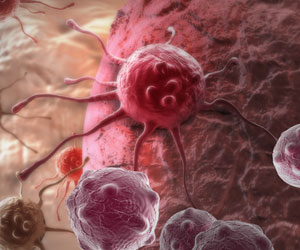Researchers at Oregon Health and Science University, Portland, have shed new light on the role of the signaling molecule Smad2 in skin cancer.
The role of the signaling molecule Smad2 in skin cancer has been explained in detail by researchers at Oregon Health and Science University, Portland.
Xiao-Jing Wang and colleagues from the university provided the new insights by analysing human skin cancer tissue and a mouse model of skin cancer.In the study, human squamous cell skin cancer samples were found to frequently lose expression of Smad2.
In particular, Smad2 expression was lost in all samples characterized as 'poorly differentiated' (which means they had progressed to become aggressive tumours).
Consistent with this, mice lacking Smad2 in cells of the skin known as keratinocytes developed chemically induced skin cancer more rapidly than normal mice, and the cancers were all characterized as 'poorly differentiated'.
The mouse cancers also underwent a process known as epithelial-mesenchymal transition (EMT) and this was found to contribute to the accelerated progression of the skin cancer to an aggressive form.
These data identify Smad2 as a suppressor of skin cancer development and progression to an aggressive form, and future studies will investigate in more detail the mechanisms underlying the role of Smad2 loss in human skin cancer progression.
Advertisement
RAS/L















